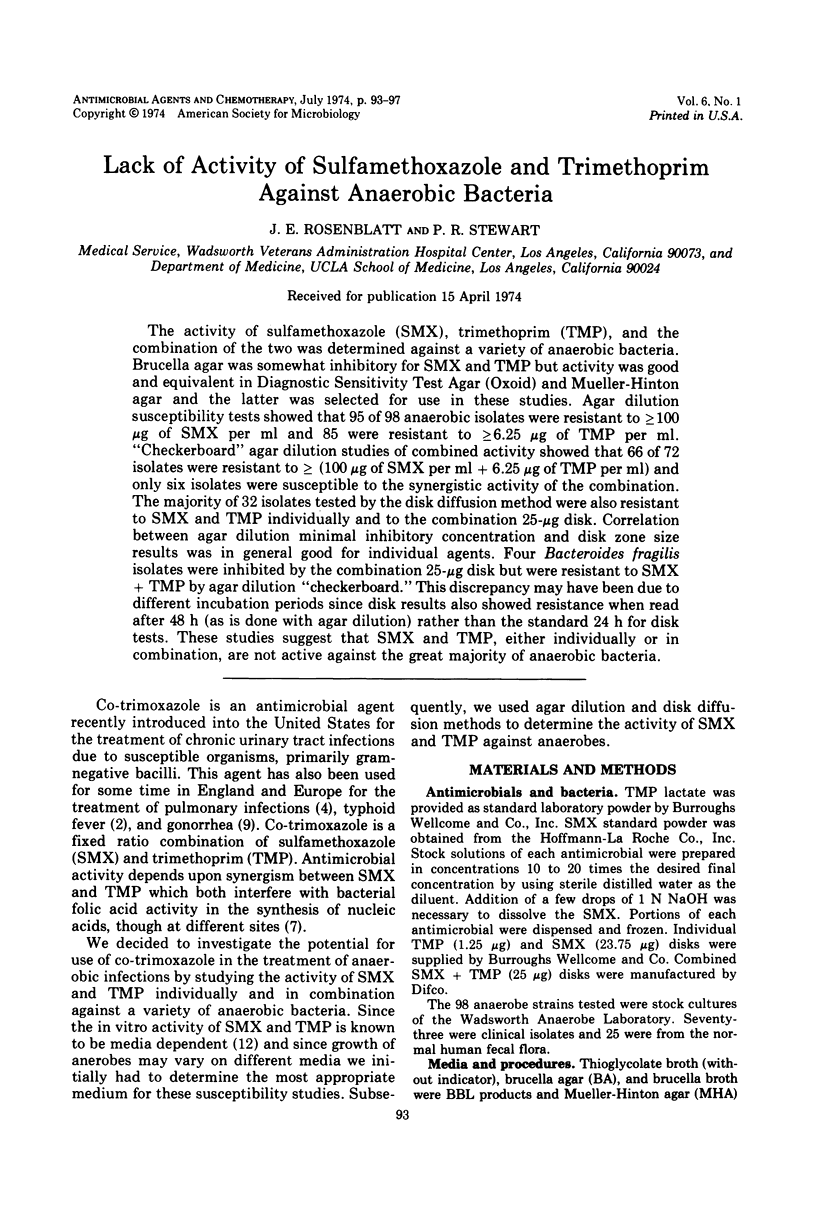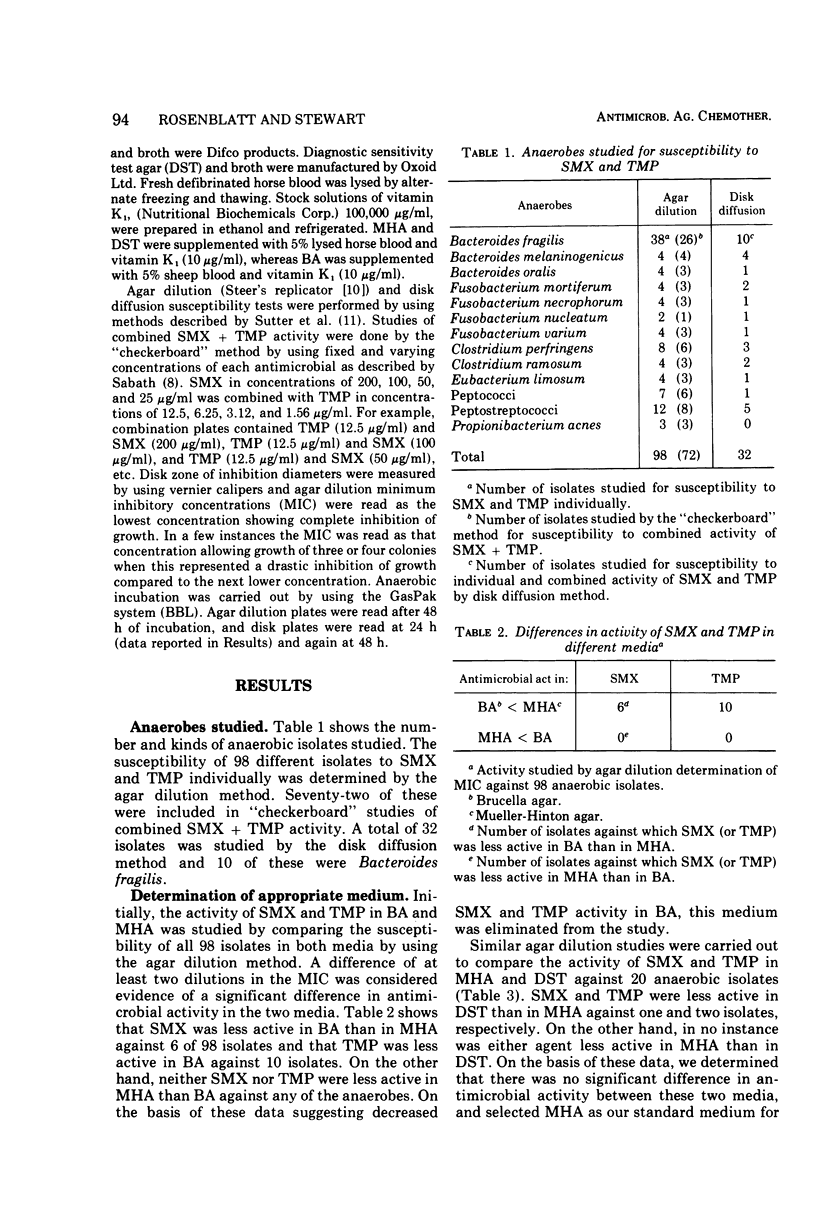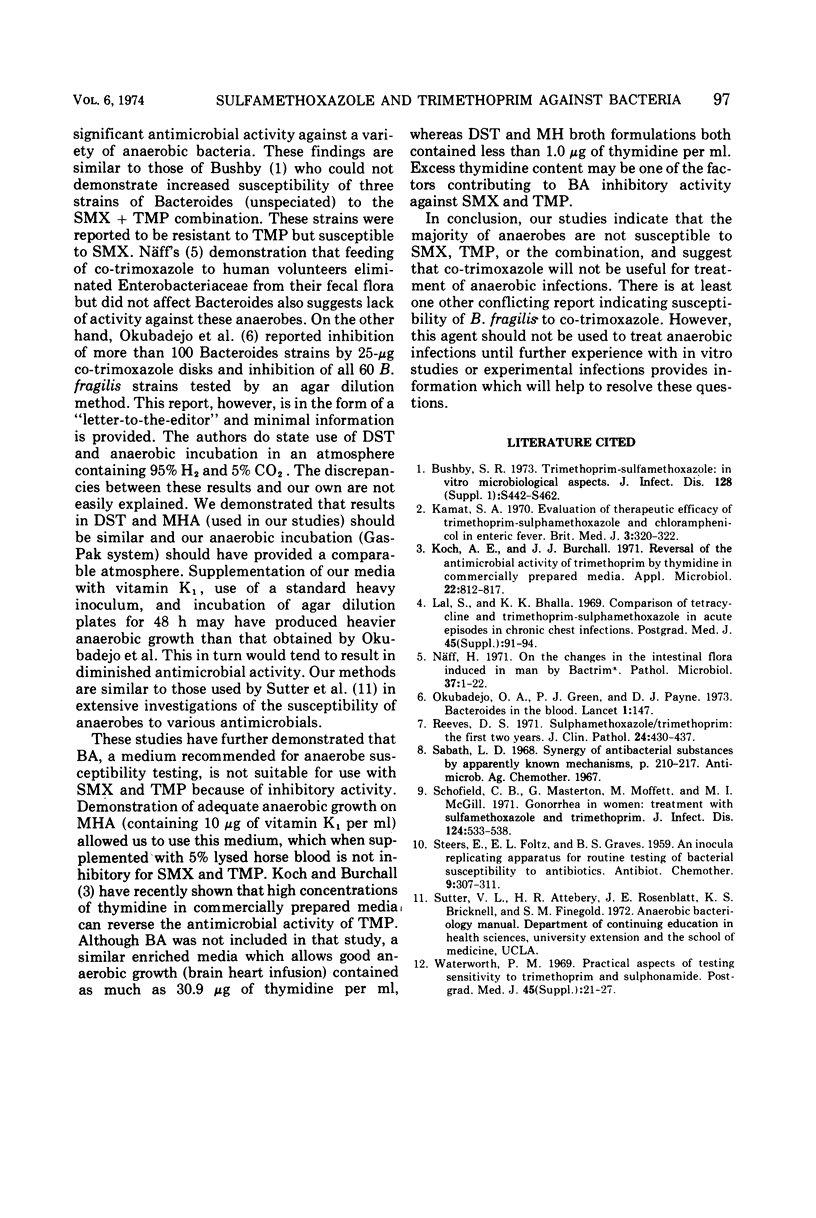Abstract
The activity of sulfamethoxazole (SMX), trimethoprim (TMP), and the combination of the two was determined against a variety of anaerobic bacteria. Brucella agar was somewhat inhibitory for SMX and TMP but activity was good and equivalent in Diagnostic Sensitivity Test Agar (Oxoid) and Mueller-Hinton agar and the latter was selected for use in these studies. Agar dilution susceptibility tests showed that 95 of 98 anaerobic isolates were resistant to ≥100 μg of SMX per ml and 85 were resistant to ≥6.25 μg of TMP per ml. “Checkerboard” agar dilution studies of combined activity showed that 66 of 72 isolates were resistant to ≥ (100 μg of SMX per ml + 6.25 μg of TMP per ml) and only six isolates were susceptible to the synergistic activity of the combination. The majority of 32 isolates tested by the disk diffusion method were also resistant to SMX and TMP individually and to the combination 25-μg disk. Correlation between agar dilution minimal inhibitory concentration and disk zone size results was in general good for individual agents. Four Bacteroides fragilis isolates were inhibited by the combination 25-μg disk but were resistant to SMX + TMP by agar dilution “checkerboard.” This discrepancy may have been due to different incubation periods since disk results also showed resistance when read after 48 h (as is done with agar dilution) rather than the standard 24 h for disk tests. These studies suggest that SMX and TMP, either individually or in combination, are not active against the great majority of anaerobic bacteria.
Full text
PDF




Selected References
These references are in PubMed. This may not be the complete list of references from this article.
- Kamat S. A. Evaluation of therapeutic efficacy of trimethoprim-sulphamethoxazole and chloramphenicol in enteric fever. Br Med J. 1970 Aug 8;3(5718):320–322. doi: 10.1136/bmj.3.5718.320. [DOI] [PMC free article] [PubMed] [Google Scholar]
- Koch A. E., Burchall J. J. Reversal of the antimicrobial activity of trimethoprim by thymidine in commercially prepared media. Appl Microbiol. 1971 Nov;22(5):812–817. doi: 10.1128/am.22.5.812-817.1971. [DOI] [PMC free article] [PubMed] [Google Scholar]
- Lal S., Bhalla K. K. Comparison of tetracycline and trimethoprim-sulphamethoxazole in acute episodes in chronic chest infections. Postgrad Med J. 1969 Nov;45(Suppl):91–95. [PubMed] [Google Scholar]
- Näff H. Uber die Veränderungen der normalen Darmflora des Menschen durch Bactrim. Pathol Microbiol (Basel) 1971;37(1):1–22. [PubMed] [Google Scholar]
- Okubadejo O. A., Green P. J., Payne D. J. Bacteroides in the blood. Lancet. 1973 Jan 20;1(7795):147–147. [PubMed] [Google Scholar]
- Reeves D. S. Sulphamethoxazole-trimethoprim: the first two years. J Clin Pathol. 1971 Jul;24(5):430–437. doi: 10.1136/jcp.24.5.430. [DOI] [PMC free article] [PubMed] [Google Scholar]
- Schofield C. B., Masterton G., Moffett M., McGill M. I. Gonorrhea in women: treatment with sulfamethoxazole and trimethoprim. J Infect Dis. 1971 Dec;124(6):533–538. doi: 10.1093/infdis/124.6.533. [DOI] [PubMed] [Google Scholar]
- Waterworth P. M. Practical aspects of testing sensitivity to trimethoprim and sulphonamide. Postgrad Med J. 1969 Nov;45(Suppl):21–29. [PubMed] [Google Scholar]


